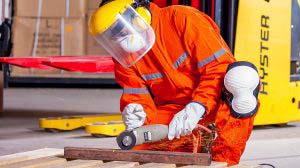
In today’s environment, organizations are expected to consider Health and Safety as a workplace requirement. Although many employers take it as a legal duty, there is still a handful of organizations who find it difficult to comply with the HSE Standards and Regulations, even under pressure.
Workplace Safety – Importance of Training
The success of a Safety Professional lies in establishing a healthy working environment that hinges on the attitude and behavior of the management and employees of that organization. Hence, irrespective of the industry or size, HSE Professionals need to act wisely before embarking on a new workplace.
Below are few questions that may be considered by the HSE Professional:
- What is the level of autonomy for the HSE role (within the department, region, country, or globally)?
- What is the existing safety culture in the organization?
- Is adhering to safety considered an everyday process or just an occasional formality?
- Is there a long-term vision and growth-strategy?
- Who creates the safety policies & program and what is the role of the Safety Professional?
- Is the safety program driven from a higher tier?
- What resources are available for achieving what your new employer wants for this role?
- Are there systems or software in place to automate processes?
- Is there a layer of ‘field’ HSE support and accessible administrative resources?
- Any online Safety training options and/or internal trainers?
- How approachable are the reporting manager and the management? How do they approach conflicts as it pertains to workplace safety?
- Will there be other barriers to bringing a difference in the organization?
- When I need to choose between multiple solutions and want to align with the company’s bigger picture, will my new boss make the time?
If the responses to majority of the above questions are positive, then the Safety Professional may finally weigh the risks against the promised benefits to decide upon the potential employer.
Occupational Health & Safety Courses
*This information has been kindly provided by an assortment of Alberta-based Safety Professionals with experience across many sectors. SET Safety and/ or the author is not responsible for the accuracy or validity of this information. SET Safety and/or the author does not accept liability for the reliability, accuracy or completeness of the information presented. This article does not substitute legal, jurisdictional or professional advice. The reader bears all responsibility to seek professional guidance or advice on any information noted in this blog or related to the content of this blog.
